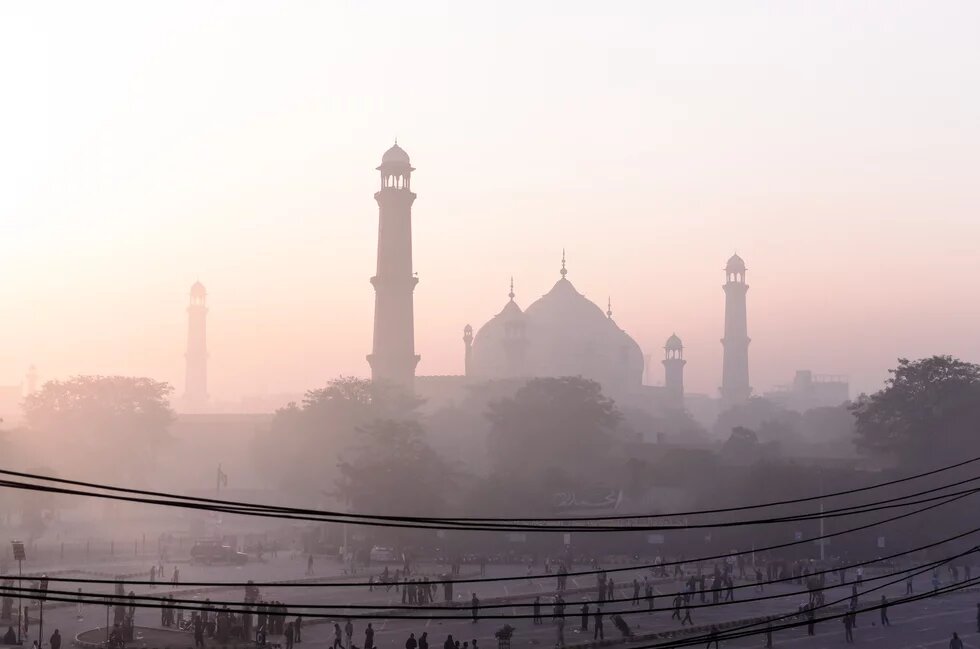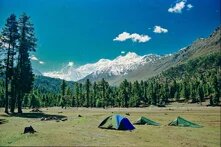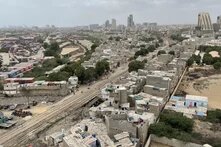The year 2024 appears to be the worst on record for air pollution in Pakistan. Successive governments need to address the problem with long term planning before it goes out of control.

Lahore, once known as the “City of Gardens” but now choked with cars and traffic jams, regularly figures on the ranking of US Air Quality Index (AQI) as one of the most polluted cities in the world. Due to its worsening air quality, the city has, in fact, overtaken New Delhi this winter to emerge as the most polluted city in the world.
“This year appears to be the worst year on record for air pollution in Lahore and the rest of Punjab province,” said Dawar Butt, Co-director of the Pakistan Air Quality Initiative (PAQI).
Founded in 2016, PAQI is a community-driven initiative to set up low-cost, real-time monitors to capture air quality data and thereby increase social awareness. The organisation has
been alerting the public about the dangers of increasing air pollution in Pakistan on social media for the last nine years.
This year, the mainstream media has also begun reporting on the issue with great urgency, with masked reporters interviewing people in the haze-covered streets of Lahore. The questions they routinely ask citizens are: “Why are you not wearing a mask? Don’t you know how dangerous this air is?”
According to local newspaper reports around 2 million people in Punjab have sought treatment for respiratory illnesses just in November this year. The AQI reading in Lahore in the month exceeded 2,000, setting new records for air pollution (AQI readings at or below 100 are generally thought of as satisfactory according to the US AQI website). “We already have some data from last year – deaths were reported a month after hospitalisations started. Last January, Punjab recorded nearly 300 pneumonia fatalities. In January 2025 we will find out how many deaths occurred due to this year’s smog,” Butt said.
Doctors say exposure to high levels of toxic pollutants not only results in respiratory problems like chest infections and asthma, but it also leads to long term issues like depression and impacts the growth of children. The smog can damage lungs and is especially dangerous for young children and the elderly.
Pollution throughout the year
According to Rafay Alam, environmental lawyer and founder of Climate Action Pakistan, the air pollution situation in Punjab is bad throughout the year, but in the winter there is temperature inversion where a layer of warm air is prevented from rising. As a result, it traps all the pollutants below to form the smog.
“The smog is not just limited to Pakistan. Every autumn/ winter, the entire Indo-Gangetic plain (north India, east Pakistan, south Nepal, and almost all of Bangladesh) is covered by air pollution, which only clears up when the western disturbances arrive,” Alam said.
The western disturbances bring in moderate to heavy rain in low-lying areas and heavy snow in the mountainous areas of the subcontinent in the winter months.
Alam does not see the smog crisis getting solved anytime soon due to lack of leadership and misdiagnosis of the problem The worsening smog, in his view, is driven in parts by emissions from brick kilns, steel mills and power plants, the burning of rice stubble from October to December, and the growing numbers of vehicles on the road. “In Pakistan we use some of the dirtiest petrol in the world, which is barely Euro-2 vehicle emission standards while the world is already on Euro-7,” he said.
It has been more than 10 years since the now obsolete Euro-2 emission standards were officially enforced in Pakistan. Euro-2 petrol is still being consumed in the country when others have gone way ahead. Alam said that the country needed to upgrade refineries, control emissions and introduce electric vehicles for which vision and strong political leadership are needed.
Malik Amin Aslam, Pakistan’s Former federal minister for climate change corroborated saying the acute problem needed to be solved in the long term by successive governments. “It requires consistency in policy making; it should go beyond politics as our children are paying a heavy price by inhaling all this toxic smog,” Aslam said.
Better data needed for diagnosis
Recently, the Punjab government announced the installation of 30 advanced air quality monitors across various cities in the province with Lahore’s monitoring capacity increasing to eight units. The government wants the collected air quality data to be integrated with the AQI system, providing accurate and reliable information to the public and researchers.
According to Alam, no policy can be effective in tackling smog without adequate air quality monitoring equipment that can accurately show the major pollutants in the city’s air and give a sense of the intensity of pollution across Punjab. The few studies that have been done in recent years by the World Bank, Food and Agricultural Organisation and Punjab’s Urban Unit concur that the majority of the emissions in Punjab come from vehicles.
Independent climate expert Imran Khalid said: “We know what the sources are. There may be questions in terms of the proportions involved but that is not necessarily a requisite when it comes to policy making. A number of source apportionment studies have been done over the years in Pakistan and we can also take insights from other regions.”
He insisted that air pollution was a national crisis that is taking a toll throughout the year and focusing only on Lahore would be of no help. The AQI readings exceeded 2000 in Multan this year. Peshawar and Rawalpindi also rank amongst the top most polluted cities in the country, according to the Pakistan Air Quality Index.
In Khalid’s view, pollution emanates from several sources –vehicular pollution (motorcycles, cars, trucks, etc), industrial pollution from cement and steel factories, stubble or crop residue burning, solid waste burning, brick kilns and coal-fired power plants (local and trans-boundary). Regardless of the proportions involved, all of these sources have to be addressed simultaneously. “It really doesn't matter whether vehicular pollution or industrial pollution is more polluting. Both have to be addressed simultaneously. Then there is the issue of trans-boundary air pollution and our neighbours need to address their sources of pollution in the same manner,” he said.
Rafay Alam pointed out that air monitors ought to be installed on the border with India to figure out exactly how much trans-boundary pollution was coming into Pakistan. Besides, equipment are needed to be installed to figure out wind direction; every winter cross border air pollution is blamed for spikes in air pollution in Lahore.
Action taken by the Punjab government
This year, the Punjab government in Pakistan ordered mini lockdowns and the closure of schools on the worst days of the smog. They also cracked down on vehicles emitting excessive smoke and placed prohibitions on barbecues and visits to recreational places like parks, urging citizens to spend maximum time indoors only going outdoors with masks on. All this had no impact on the smog, however.
The AQI in Lahore seemed to have visibly improved in November/ December only when heavy trucks were not allowed into the city during all the protests against the government that took place recently, said Dawar Butt.
In a recent public letter addressed to the Prime Minister of Pakistan, leading environmental organisation WWF-Pakistan recommended a ban on high-emission vehicles and called for stringent controls against brick kilns and construction activities during the smog season.
For long-term improvement in air quality, WWF-Pakistan called for transitioning to Euro-5 or Euro-6 fuel quality standards and the promotion of electric vehicles, especially motorbikes and rickshaws, to reduce emissions. Other recommendations included expanding Pakistan’s mass transit network, increasing green financing options, and introducing subsidies to discourage crop residue burning.
The AQI readings are down to 200 now and the sun is visible in Lahore. Already, it seems that the calls for a “national health emergency” have died down and this year’s crisis is over.
“People and policymakers will forget about the air pollution until next fall when it starts all over again, although air pollution exists throughout the year and we have no idea what our children are inhaling,” says Alia Khan, who used to work in the developments sector and now lives in Lahore with her two young children.
Khan’s younger child was born in May this year and he has already been through a nasty heat wave, followed by a dangerous dengue season and now these toxic, smoggy winter months. “He’s going to grow up in a severely climate impacted world and our policymakers need to wake up and take smarter action. We need to approach this problem scientifically and come up with long term solutions,” she said.


